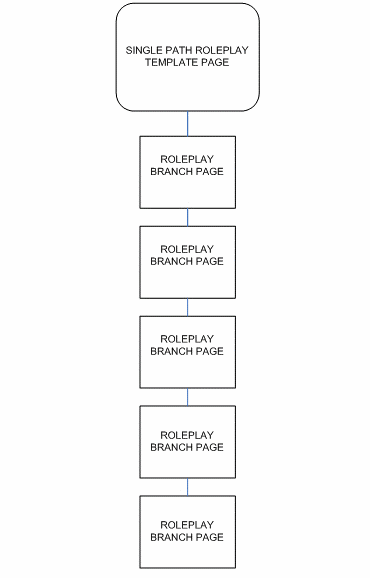You can simulate real-life scenarios based on the cause-and-effect interaction of decisions that people make and the relationships they have in their workplace environment. Roleplays usually include at least one character, and they present several options that reflect potential responses the learner could make in the situation.
The learner advances through the Roleplay on a path determined by the responses chosen (good, fair, poor, or catastrophic). In a Single Path Roleplay template, learners follow one path to the end, regardless of the choices made. In the Multi Path Roleplay template, learners can follow a multitude of different paths, branching from the decisions made within the Roleplay. At the end of a Roleplay, the learner's responses are assessed and attribute-specific feedback is provided.
Single Path Roleplays vs. Multi Path Roleplays
Note: When creating a new Roleplay page, one Roleplay Branch page is automatically added.
Single Path Roleplays
In Single Path RolePlays, the instructional path through the Roleplay is the same for all learners, regardless of the choices they make. Learners proceed in a single path from the first scene through the last. The following features differentiate Single Path RolePlays from Multi Path RolePlays:
The following is a mapping example of a Single Path Roleplay.

Multi Path Roleplays
In the Multi Path Roleplay, the choices grow into an inverted tree, with a separate branch for each choice. Unlike the Single Path Roleplay, the instructional path can vary, depending on the Response Choices that the learner makes along the way. In the Multi Path Roleplay, learners can also jump from one path to another. The following features differentiate Multi Path Roleplays from Single Path Roleplays:
The following is a mapping example of a Multi Path Roleplay.
